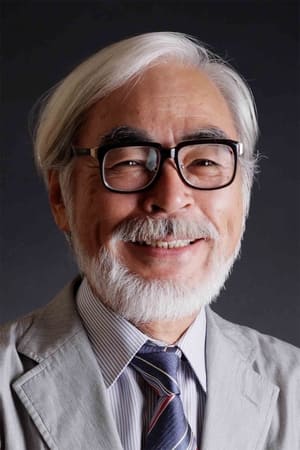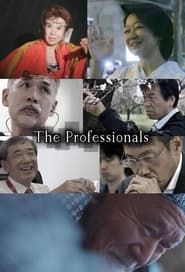
Hayao Miyazaki
Hayao Miyazaki (Miyazaki Hayao, born January 5, 1941) is a Japanese manga artist and prominent film director and animator of many popular anime feature films. Through a career that has spanned nearly five decades, Miyazaki has attained international acclaim as a maker of animated feature films and, along with Isao Takahata, co-founded Studio Ghibli, an animation studio and production company. The success of Miyazaki's films has invited comparisons with American animator Walt Disney, British animator Nick Park as well as Robert Zemeckis, who pioneered Motion Capture animation, and he has been named one of the most influential people by Time Magazine. Miyazaki began his career at Toei Animation as an in-between artist for Gulliver's Travels Beyond the Moon where he pitched his own ideas that eventually became the movie's ending. He continued to work in various roles in the animation industry over the decade until he was able to direct his first feature film Lupin III: The Castle of Cagliostro which was published in 1979. After the success of his next film, Nausicaä of the Valley of the Wind, he co-founded Studio Ghibli where he continued to produce many feature films until Princess Mononoke whereafter he temporarily retired. While Miyazaki's films have long enjoyed both commercial and critical success in Japan, he remained largely unknown to the West until Miramax released his 1997 film, Princess Mononoke. Princess Mononoke was the highest-grossing film in Japan—until it was eclipsed by another 1997 film, Titanic—and the first animated film to win Picture of the Year at the Japanese Academy Awards. Miyazaki returned to animation with Spirited Away. The film topped Titanic's sales at the Japanese box office, also won Picture of the Year at the Japanese Academy Awards and was the first anime film to win an American Academy Award. Miyazaki's films often incorporate recurrent themes, such as humanity's relationship to nature and technology, and the difficulty of maintaining a pacifist ethic. Reflecting Miyazaki's feminism, the protagonists of his films are often strong, independent girls or young women. Miyazaki is a vocal critic of capitalism and globalization. While two of his films, The Castle of Cagliostro and Castle in the Sky, involve traditional villains, his other films such as Nausicaa or Princess Mononoke present morally ambiguous antagonists with redeeming qualities.
Known For
Credits
- 2006 ·Professional: Shigoto no ryûgias Self
- Future ·The Professionalsas Himself
- 2025 ·Miyazaki, Spirit of Natureas Self (stock footage)
- 2025 ·Miyazakias Self
- 2024 ·Hayao Miyazaki and the Heronas Self
- 2023 ·2399 Days with Hayao Miyazaki & Studio Ghiblias Self
- 2021 ·Hideaki Anno: The Final Challenge of Evangelionas Self
- 2019 ·10 Years with Hayao Miyazakias Self
- 2017 ·Never-Ending Man: Hayao Miyazakias Self
- 2014 ·Isao Takahata and His Tale of the Princess Kaguyaas Self
- 2014 ·The Work of Hayao Miyazaki "The Wind Rises" Record of 1000 Days/Retirement Announcement Unknown Storyas himself
- 2013 ·The Kingdom of Dreams and Madnessas Self
- 2013 ·Miwa: A Japanese Iconas Himself
- 2012 ·Giant God Warrior Appears in Tokyoas Giant Robot (voice)
- 2011 ·Ghibli Landscapes - A Journey to Encounter Directors Isao Takahata and Hayao Miyazaki's Starting Pointas Self
- 2011 ·A Hedgehog Came Out of the Fogas
- 2011 ·Poppy Hill - 300 Days of War Between Father and Sonas Himself
- 2011 ·Kurosawa's Wayas Self
- 2011 ·Japanese Cinema: New Territoriesas Self
- 2010 ·Inside Ghibli's Creation: 400 Days of Clash Between Hayao Miyazaki and The New Directoras Himself
- 2010 ·Ghibli's Bookshelfas self
- 2009 ·How Ponyo Was Born: Hayao Miyazaki's Thought Processas Self
- 2009 ·Professional Special: Director Miyazaki Hayaoas Self
- 2008 ·25th Anniversary Studio Ghibli Concertas Self - Filmmaker
- 2008 ·Making of Ponyoas Self
- 2008 ·Ghibli Landscapes - The Japan Depicted In Miyazaki's Worksas
- 2007 ·A Ghibli Artisan - Kazuo Oga Exhibition - The One Who Drew Totoro's Forestas Self
- 2006 ·The Work of Toshio Suzuki Don't Believe in Myself, I Believe in Peopleas Self
- 2005 ·Hayao Miyazaki and the Ghibli Museumas Self
- 2005 ·Ghibli and The Miyazaki Mysteryas Self - Interviewee
- 2004 ·Hayao Miyazaki Produces a CDas Self
- 2004 ·Yasuo Ōtsuka's Joy in Motionas Self
- 2004 ·Princess Mononoke: Making of a Masterpieceas Self
- 2003 ·Lasseter-san, Thank Youas Himself
- 2003 ·The Birth of Studio Ghiblias
- 2003 ·The Art of 'Spirited Away'as Himself
- 2002 ·Imaginary Flying Machinesas Le cochon
- 2002 ·"The Ornithopter Story: Fly, Hiyodori Tengu!"as Himself
- 2002 ·Mei and the Kittenbusas Neko Bâchan (Voice)
- 2002 ·The Cat Returns - Making ofas Self
- 2001 ·Princess Mononoke in the U.S.A.as Himself
- 2001 ·The Nippon Television Specialas Himself
- 1998 ·The World, The Journey Of My Heart - Traveler: Animation Film Director Hayao Miyazakias Himself
- 1998 ·How Ghibli Was Bornas Himself
- 1997 ·The Birth of "Princess Mononoke" Part 1: A Drama on Paperas Self
- 1997 ·The Birth of "Princess Mononoke" Part 3: The Day The Record Was Brokenas Self
- 1997 ·The Birth of "Princess Mononoke" Part 2: Life Has Been Breathed Into It!as Self
- 1994 ·Manga!as Self
- 1993 ·In Love With and Living Within Movies - Akira Kurosawa and Hayao Miyazakias Self
- 1991 ·The Making of Only Yesterdayas Self
- Future ·The Secrets of My Neighbors the Yamadasas




